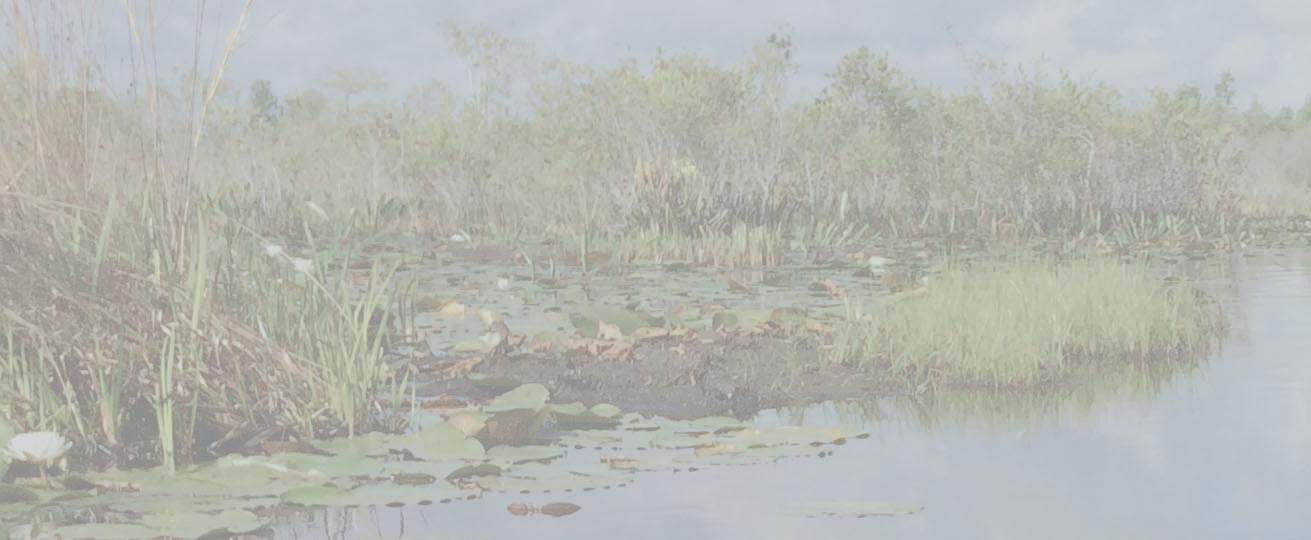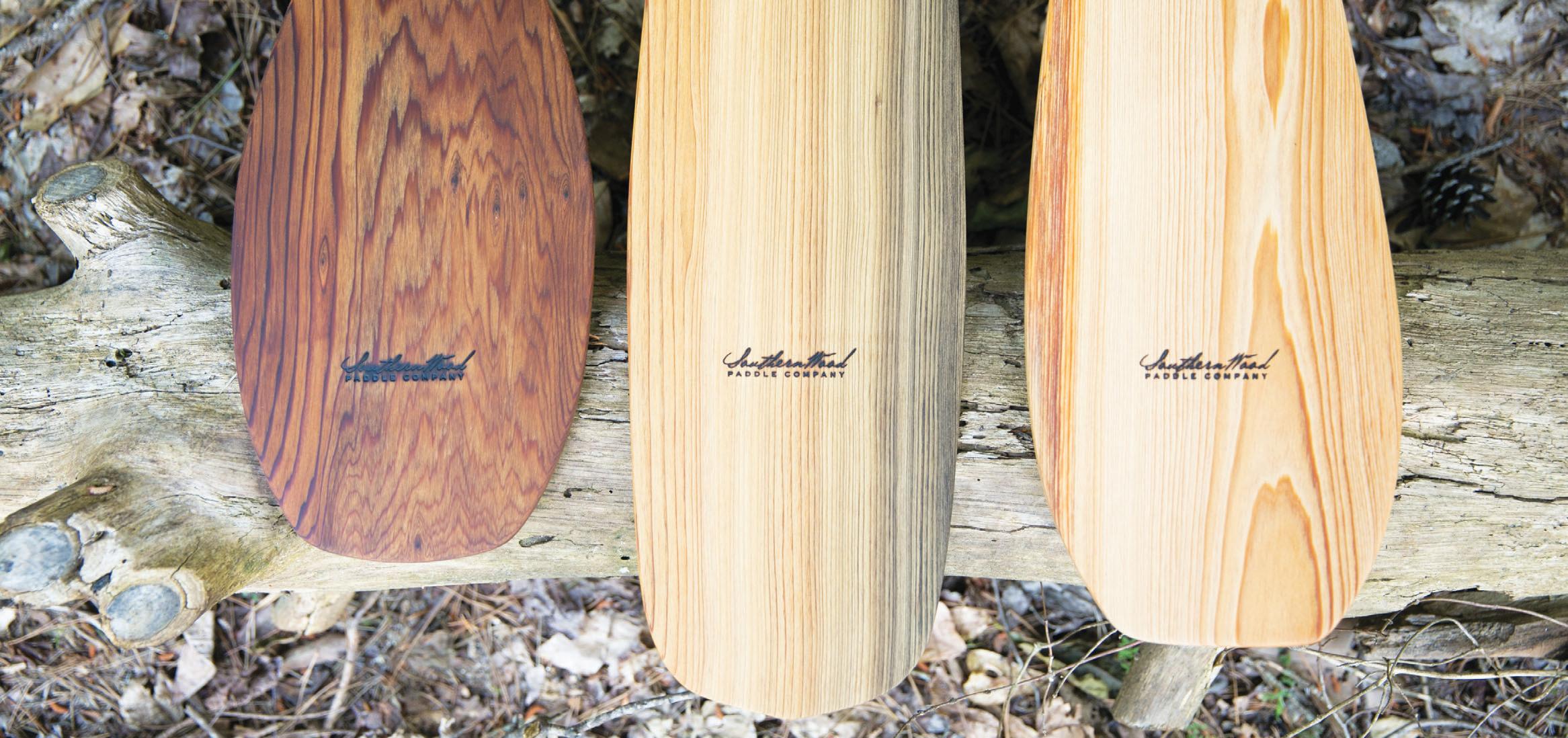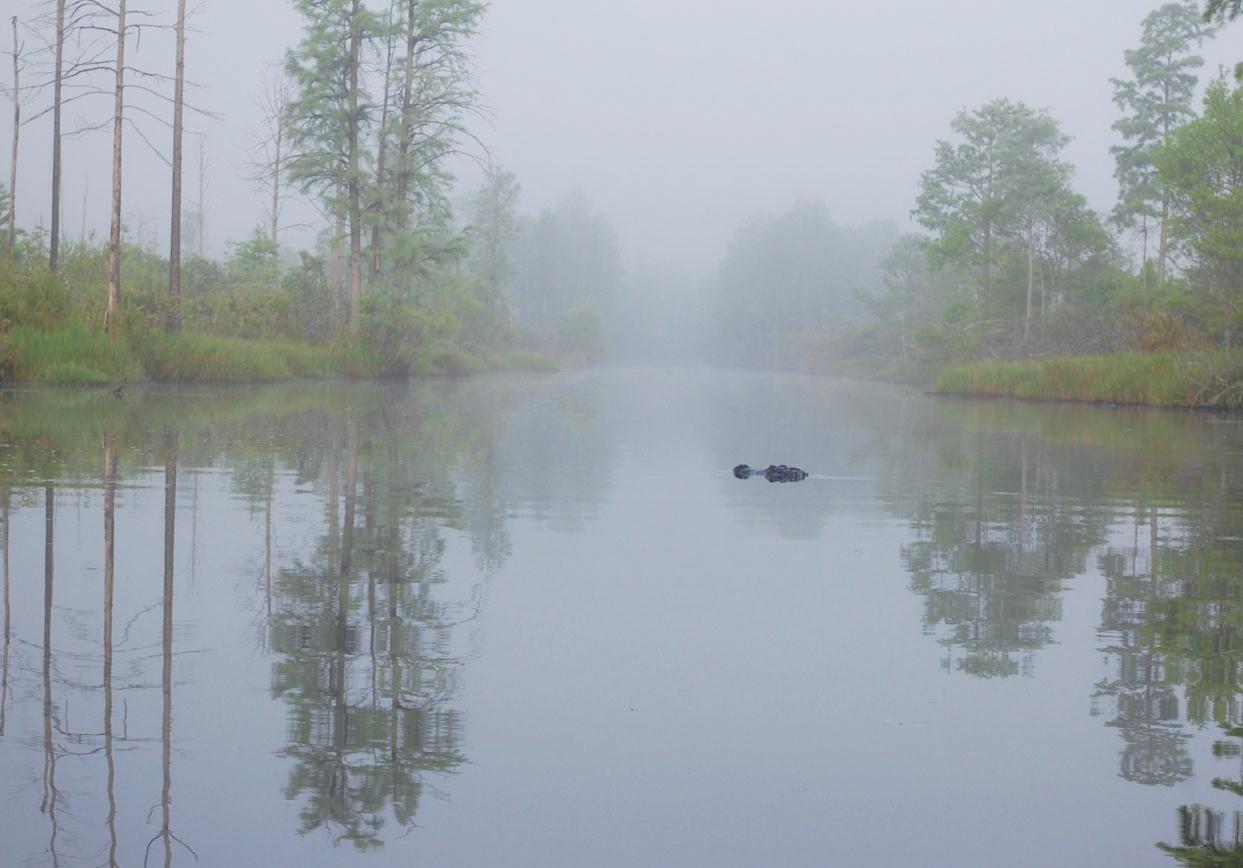
4 minute read
Around the Reef 1 11
By Adam Chulawat Communications Intern Gray’s Reef National Marine Sanctuary
Meet the Atlantic Portuguese man o’ war, or man-of-war for short. In summation, it’s like a jellyfi sh, but not at all. Its body is shaped like a fl oat. It has tentacles. It drifts through the ocean, stinging and consuming prey. Much like jellyfi sh, it even tends to wash up on beach shores.
Advertisement
In my time interning at Gray’s Reef National Marine Sanctuary, I have come across numerous species that I have never heard of before. However, this one takes home the trophy in terms of bizarreness. It’s the type of creature to make you question scientists, saying, “Are you absolutely sure it’s not a jellyfi sh?” The man-of-war is a carnivorous invertebrate that is a species of siphonophore - an organism that is composed of a colony of identical, smaller organisms working together to function as a whole unit.
The smaller organisms that make up the man-of-war, called zooids, are so specialized that they cannot live separately without the others.
The man-of-war gets its name from 18th-century Portuguese warships’ sails and is most distinguishable by the blue, violet, or pink bubble fl oat that hovers up to six inches over the water. Think of it as a dangerous looking empanada or wonton. The man-of-war is one of the drifting marine life found in Gray’s Reef National Marine Sanctuary. In addition to Gray’s Reef, it is also found in the other parts of the Atlantic and in the Pacifi c, Indian, and Caribbean, where the creatures have been recorded to fl oat in groups of 1000 or more at once.
Underneath the man-of-war’s fl oat are venomous tentacles that can extend well over 100 feet in length. The tentacles are composed of a chain of zooids. Think of them as danger noodles. The zooids can be distinguished into three separate groups that each have a specifi c
The man-of-war fi sh (two seen here below their namesake) are venom-resistant, but not impervious, and they must still use caution around the tentacles. Photo by Evan D’Alessandro
These small colorful creatures pack a powerful punch. Photo provided by NOAA
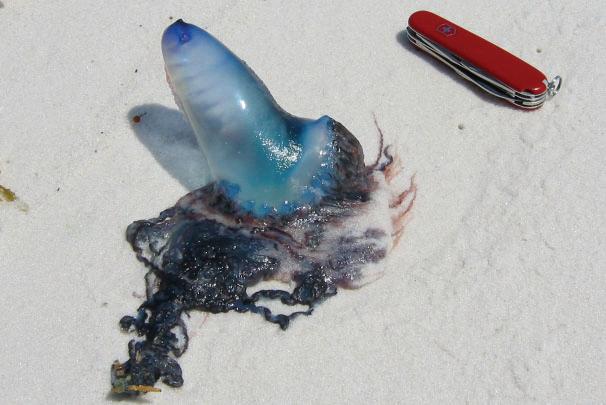
function. The prey-catching tentacles are called dactylozooids. The dactylozooids wield nematocysts, or stingers that deliver a poisonous poke to an unwary victim. The gastrozooids, located in the mouth of the man-of-war, help with feeding and digestion. Whenever the man-of-war catches prey, the gastrozooids attach and expand over it, digesting and liquifying it into food. The gonozooids help the man-of-war reproduce. The gonozooids consist of male and female parts. The man-of-war can reproduce sexually by budding or asexually. Each part of the man-ofwar has a specifi ed skill that benefi ts the surrounding organisms in the colony to survive.
The sting from a man-of-war is deadly to prey and extremely painful to humans. Side eff ects from stings on humans include nausea, vomiting, headaches, dizziness and irregular heart rate. Some stings have even been reported to be fatal. Usually, their stings result in welts that cause a burning sensation that lasts a few days after contact. Beachgoers be warned, if you see one of these, do not touch them. Beaches have been shut down due to man-of-war sightings and wash ups because they can still produce a venomous sting even after death. You don’t want to accidentally step on one of these.
Though the man-of-war is a dangerous predator, it still has predators of its own. The loggerhead sea turtle, which can be found at Gray’s Reef, is known to feed on the man-of-war. The man-of-war fi sh, or Nomeus gronovii, is another animal that feeds on it. This fi sh gets its name from its resistance to the potent venom from the man-of-war that would normally cause paralysis in other fi sh of its size. However, it still is not entirely resistant to the man-of-war’s sting. It must proceed with caution as it nibbles on the tentacles and gonads of the man-of-war.
The venomous siphonophore known as the Atlantic Portuguese man o’ war is a mysterious species that scientists are still trying to learn more about. Its early development stages are hard to study because it is unable to survive in an aquarium setting. Scientists also are still trying to fi nd explanations for how this colony of organisms comes together to form a single unit. What we do know about the man-of-war is clear: it is a dangerous marvel of a creature that you do not want to stumble upon in the water or at the beach.

Oysters • Drink specials • Great menu items
Live bait
Dockage Dry Storage
Fish Tales 727.3473 • Ft. McAllister Marina 727.2632 3203 Ft. McAllister Road • Richmond Hill, GA • SM 605
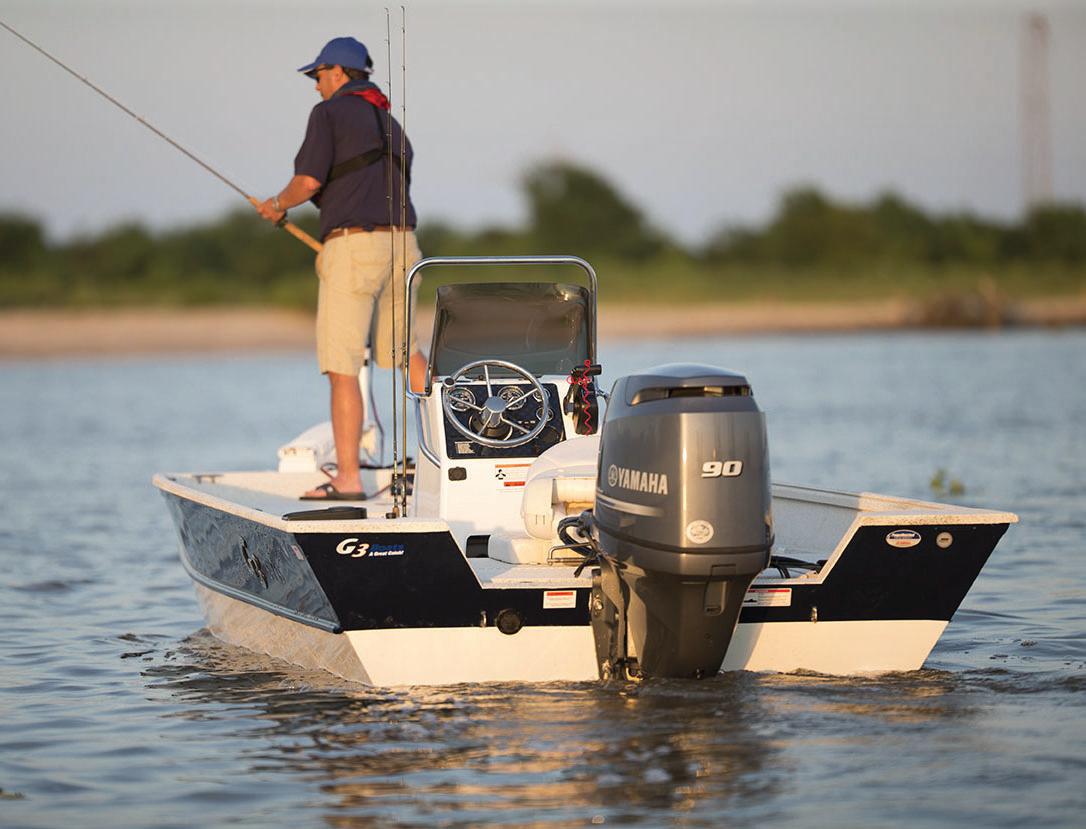
Get out on the water with one of our Mercury Re-powers !
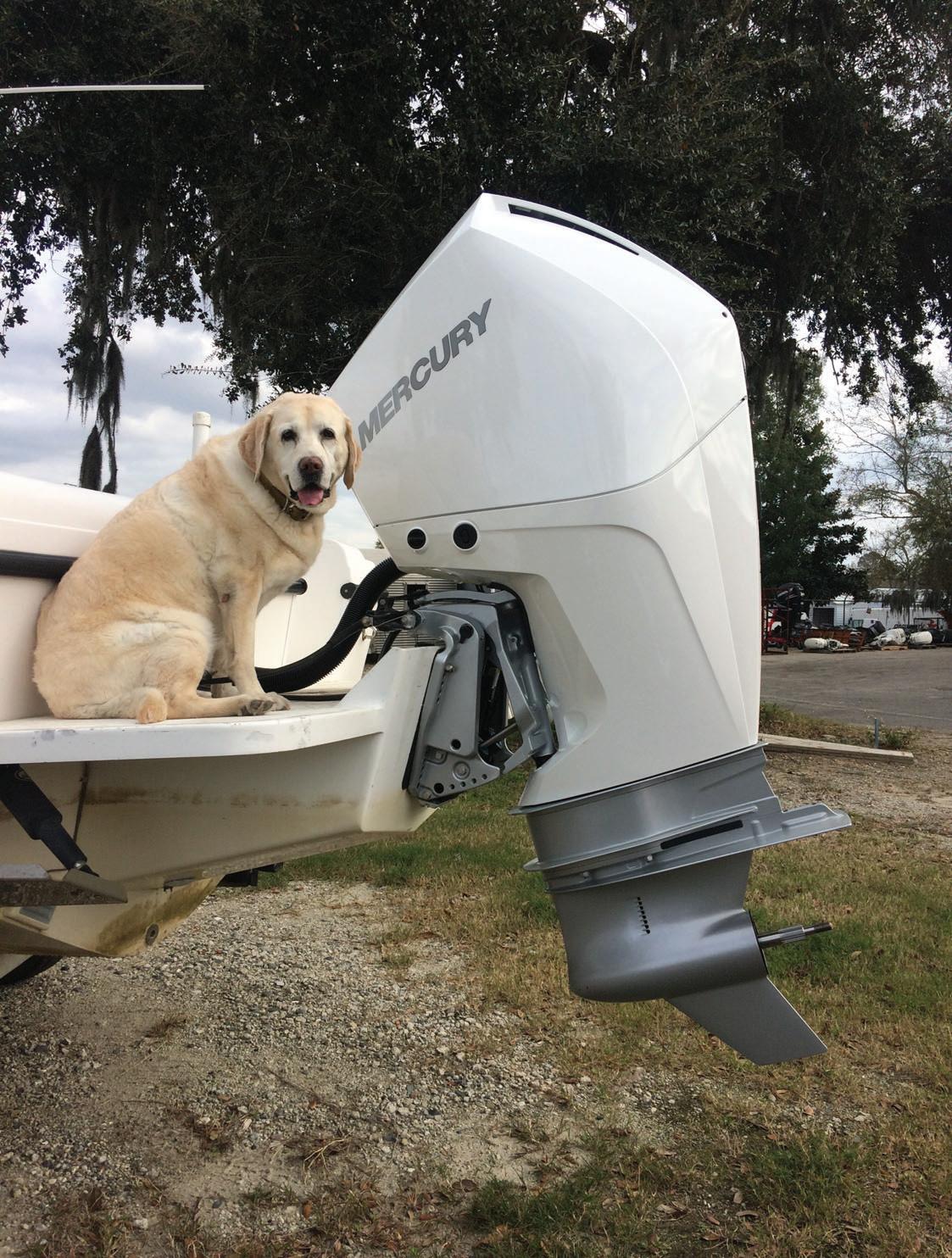
2604 Causton Bluff Road • Savannah, GA (912) 376-8776 • HaleMarineInc@gmail.com

Satilla Marine Family Owned and Operated Since 1977

Parts and Service - Boats - Trailers - Outboards Accessories - Boat Gear - Rods - Reels - Tackle
Serving all of coastal and south Georgia for your fishing and boating needs! 1807 Old Reynolds Street • Waycross, GA • (912) 285•8115 • sales@satillamarine.com


